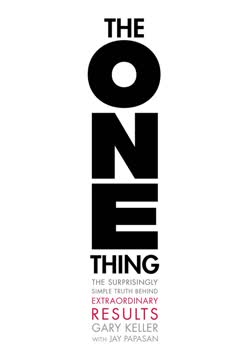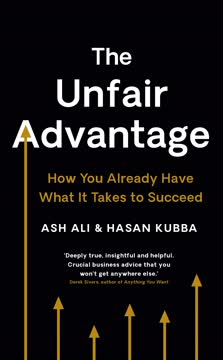Key Takeaways
1. Polymathy is about versatility, not just multiple skills
To be the best in the world at one thing, you need to be better than everyone else who specializes in that field. But to be great, without being the best, at three or more subjects simultaneously is not only rare, but also significantly easier than being the greatest of the great in one field.
Redefining polymathy. True polymathy goes beyond simply accumulating multiple skills or areas of expertise. It's about developing a versatile mindset that allows for creative integration of diverse knowledge. This approach enables individuals to adapt quickly to changing environments and solve complex problems by drawing from a broad knowledge base.
Benefits of versatility. In today's rapidly evolving world, being a polymath offers significant advantages:
- Increased adaptability to technological and societal changes
- Enhanced problem-solving abilities through cross-disciplinary thinking
- Greater career flexibility and opportunities for innovation
- Improved ability to communicate and collaborate across different fields
2. Cross-pollination is the key to polymathic success
Cross-pollination refers to pollen from one type of crop mixing with crops of another type, resulting in the creation of hybrids. This is often done intentionally to create all sorts of unique combinations.
Integrating diverse knowledge. Cross-pollination in polymathy involves combining insights from different fields to create innovative solutions or ideas. This process often leads to breakthroughs that wouldn't be possible within a single discipline.
Examples of successful cross-pollination:
- Leonardo da Vinci using mathematical principles in his artwork and inventions
- Einstein applying musical concepts to his theories in physics
- Modern tech entrepreneurs combining business acumen with technological expertise
By actively seeking connections between seemingly unrelated fields, polymaths can:
- Identify unique opportunities for innovation
- Develop more comprehensive problem-solving approaches
- Create novel products, services, or theories that bridge multiple disciplines
3. Transfer of learning enhances polymathic abilities
A learning transfer occurs when you use knowledge or skills acquired in a certain context in an area that is different from the original one.
Types of learning transfer. Understanding different types of learning transfers can help polymaths apply their knowledge more effectively:
- Near transfer: Applying knowledge to similar contexts
- Far transfer: Using knowledge in vastly different contexts
- Positive transfer: Successfully applying knowledge to new situations
- Negative transfer: When previous knowledge hinders learning in a new context
Strategies for effective learning transfer:
- Practice metacognition by questioning and reflecting on your learning
- Seek out diverse contexts to apply your knowledge
- Focus on understanding underlying principles rather than surface-level information
- Use analogies and concrete examples to bridge different domains of knowledge
4. Analogies and mind-mapping break down complex knowledge
Analogies are essentially comparisons between two seemingly unrelated concepts or skills.
Power of analogies. Analogies serve as powerful tools for polymaths to:
- Simplify complex concepts
- Facilitate understanding across different domains
- Enhance memory and recall of information
- Stimulate creative thinking and problem-solving
Mind-mapping techniques. Mind maps help organize and visualize connections between different ideas:
- Start with a central concept and branch out to related subtopics
- Use colors, symbols, and images to enhance visual memory
- Regularly review and update your mind maps as your knowledge expands
- Use digital tools for easy editing and sharing of complex mind maps
5. The polymathic mind is adaptable and experimental
Polymaths don't waste time identifying as anyone in particular—they see their identities as whatever they need to be to help them do whatever it is they want to do.
Embracing adaptability. The polymathic mind thrives on:
- Challenging established norms and conventions
- Being comfortable with uncertainty and ambiguity
- Continuously seeking new experiences and knowledge
- Adapting quickly to changing circumstances and information
Experimental mindset. Polymaths approach learning and problem-solving with an experimental attitude:
- Treat failures as valuable learning experiences
- Actively seek out opportunities to test ideas and hypotheses
- Embrace a "what if" mentality to explore new possibilities
- Use real-world experiments to gather data and refine theories
6. Embrace the beginner's mindset for continuous growth
The beginner's mindset is drawn from the Zen Buddhist concept Shoshin, described as "having an attitude of openness, eagerness, and lack of preconceptions when studying a subject, even when studying at an advanced level, just as a beginner in that subject would."
Benefits of the beginner's mindset:
- Maintains curiosity and enthusiasm for learning
- Reduces bias and preconceptions that can limit thinking
- Encourages asking fundamental questions that experts might overlook
- Promotes humility and openness to new ideas
Cultivating a beginner's mindset:
- Approach familiar subjects as if encountering them for the first time
- Ask "dumb" questions to challenge assumptions and gain new insights
- Focus on the process of learning rather than achieving expertise
- Regularly expose yourself to new fields and perspectives
7. Belief and relentless perseverance drive polymathic achievement
Without belief, you are putting an arbitrary limit on yourself. You sabotage yourself and may never even get started.
Power of belief. A strong belief in one's ability to learn and achieve is crucial for polymathic success:
- Overcome self-imposed limitations and societal expectations
- Maintain motivation during challenging learning experiences
- Inspire others to push beyond perceived boundaries
- Foster a growth mindset that sees potential in every situation
Cultivating perseverance. Polymaths understand that discomfort is an essential part of growth:
- Embrace challenges as opportunities for learning and development
- Develop self-discipline to push through difficulties and setbacks
- Practice tolerance for uncertainty and ambiguity
- Focus on long-term goals rather than short-term discomfort
By combining unwavering belief with relentless perseverance, polymaths can achieve breakthroughs that others might consider impossible.
Last updated:
FAQ
What's "Learn Like a Polymath" about?
- Overview: "Learn Like a Polymath" by Peter Hollins is a guide on how to teach yourself anything, develop expertise across multiple disciplines, and become irreplaceable in your professional and personal life.
- Polymath Concept: The book explores the concept of polymathy, which involves acquiring knowledge and skills in various fields and integrating them creatively.
- Practical Advice: It provides practical strategies for learning effectively, transferring skills across domains, and thinking like a polymath to achieve success.
Why should I read "Learn Like a Polymath"?
- Skill Diversification: The book emphasizes the importance of diversifying your skill set in today's rapidly changing world, making you more adaptable and valuable.
- Learning Techniques: It offers actionable techniques for self-directed learning and skill acquisition, which can be applied to any field of interest.
- Mindset Development: Reading this book can help you develop a polymathic mindset, characterized by curiosity, adaptability, and a willingness to experiment.
What are the key takeaways of "Learn Like a Polymath"?
- Cross-Pollination: Integrating knowledge from different fields can lead to creative breakthroughs and unique solutions.
- Learning Transfer: Understanding and applying the concept of learning transfer can enhance your ability to use knowledge in new contexts.
- Polymathic Traits: Developing traits such as adaptability, curiosity, and a beginner's mindset is crucial for becoming a polymath.
What is the "cross-pollination" concept in "Learn Like a Polymath"?
- Definition: Cross-pollination involves combining knowledge and skills from different disciplines to create innovative solutions and ideas.
- Importance: It is a key strategy for achieving polymathy, as it allows for the integration of diverse expertise.
- Application: The book provides guidelines on how to identify and connect disparate fields to enhance creativity and problem-solving.
How does "Learn Like a Polymath" define a polymath?
- Multiple Intelligences: A polymath is someone who has developed expertise in at least three different domains, integrating them effectively.
- Breadth, Depth, Integration: The book emphasizes the importance of having a broad knowledge base, deep understanding in specific areas, and the ability to integrate these seamlessly.
- Modern Relevance: In today's world, being a polymath is increasingly valuable as it allows for adaptability and innovation.
What is the "learning transfer" concept in "Learn Like a Polymath"?
- Definition: Learning transfer is the ability to apply knowledge or skills acquired in one context to different, often unrelated, contexts.
- Types of Transfers: The book discusses various types of learning transfers, including positive, negative, simple, complex, specific, and non-specific transfers.
- Enhancing Transfer: Strategies are provided to improve learning transfer, such as being an active learner and using metacognition to regulate your thought process.
What are "academic analogies" in "Learn Like a Polymath"?
- Purpose: Academic analogies are used to simplify complex concepts by comparing them to more familiar ideas, aiding in understanding and retention.
- Types of Analogies: The book outlines different types of analogies, such as synonym, antonym, part/whole, and cause/effect, each serving a unique purpose in learning.
- Application: Using analogies helps in transferring knowledge across disciplines and enhances creative thinking.
How does "Learn Like a Polymath" suggest using mind-mapping?
- Organizational Tool: Mind-mapping is recommended as a technique to organize and visualize information, making it easier to understand and remember.
- Creation Process: The book provides a step-by-step guide on creating mind maps, starting with a central idea and branching out into subtopics.
- Benefits: Mind maps help in seeing the bigger picture, identifying connections between concepts, and retaining information more effectively.
What is the "beginner's mindset" in "Learn Like a Polymath"?
- Definition: The beginner's mindset involves approaching learning with openness, curiosity, and a lack of preconceived notions, similar to how a novice would.
- Benefits: This mindset encourages asking questions, exploring new ideas, and avoiding the complacency that can come with expertise.
- Application: The book suggests adopting this mindset to enhance learning and adaptability, allowing for continuous growth and discovery.
How does "Learn Like a Polymath" address the role of belief in learning?
- Belief in Possibility: The book emphasizes the importance of believing in your ability to learn and achieve goals, as this mindset can significantly impact your success.
- Historical Example: It uses the story of Roger Bannister breaking the four-minute mile as an illustration of how belief can overcome perceived limitations.
- Self-Fulfilling Prophecy: Believing in your potential can lead to actions that make success more likely, reinforcing the importance of a positive mindset.
What does "Learn Like a Polymath" say about being relentless?
- Definition: Being relentless involves perseverance and the willingness to push through discomfort and obstacles to achieve your goals.
- Importance: The book highlights that true polymaths are relentless in their pursuit of knowledge and mastery, often going beyond their comfort zones.
- Self-Discipline: Developing self-discipline is crucial for maintaining focus and motivation, especially when learning new and challenging subjects.
What are the best quotes from "Learn Like a Polymath" and what do they mean?
- "Cross-pollination is the key to innovation." This quote emphasizes the importance of integrating knowledge from different fields to create new ideas and solutions.
- "A polymath is not defined by what they know, but by how they think." It highlights the significance of mindset and approach over mere accumulation of knowledge.
- "Belief is the first step to achievement." This underscores the power of a positive mindset in overcoming challenges and reaching goals.
Review Summary
Learn Like a Polymath receives mixed reviews, with an average rating of 3.86/5. Readers appreciate its practical learning tips and concise format, finding it helpful for students. Many praise the book's coverage of learning techniques like mind mapping and chunking. However, some criticize its lack of depth and tangential discussions. Critics argue it doesn't offer much new information for experienced learners. Overall, readers find it a decent introduction to learning strategies, though some desire more in-depth coverage of polymath-specific techniques.
Similar Books










Download PDF
Download EPUB
.epub digital book format is ideal for reading ebooks on phones, tablets, and e-readers.













